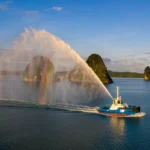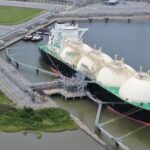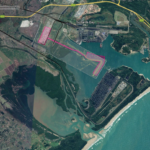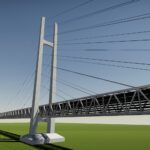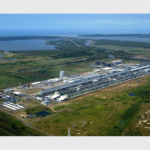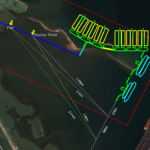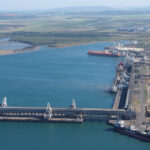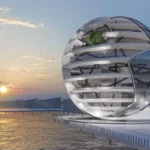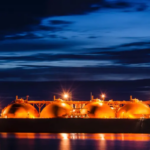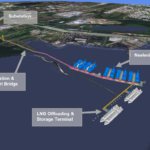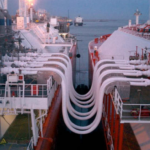Address
304 North Cardinal St.
Dorchester Center, MA 02124
Work Hours
Monday to Friday: 7AM - 7PM
Weekend: 10AM - 5PM
Anchor Energy LNG’s two projects – the LNG terminal and the floating power plant – will provide energy security, energy availability and energy services in an affordable and sustainable manner.
Anchor Energy LNG is intending developing and constructing an innovative and strategically significant Liquefied Natural Gas (LNG) facility in the waters of the Port of Richards Bay. This infrastructure is associated with the receiving and storage of LNG; the delivery of LNG to a floating power plant, and on-demand regasification for use by the power turbines; as well as infrastructure necessary to support the operation of the Nseleni Independent Floating Power Plant (NIFPP). The NIFPP will comprise purpose-designed, floating combined-cycle gas turbine (CCGT) power plants and associated infrastructure to evacuate power from the NIFPP to the national grid.
The dual-marine project represents five years of engineering evaluation and a US$6 billion investment by the private sector in State infrastructure.
LNG is transported in ocean-going tankers equipped with purpose-built cryogenic containers which retain the natural gas in liquid form.
LNG is transferred from the supply vessels into the two permanently moored Floating Storage Units (FSUs) connected to the LNG terminal.
LNG is re-gasified (converted from a liquid to a gas) at each of the six floating power barges at the rate required for each floating power barge. This is achieved using proprietary purpose designed re-gasification units.
The gas is combusted by the Combined Cycle Gas Turbines (CCGTs) on each power barge. Each barge is capable of producing 435 MW from its gas turbine and an additional 215 MW from the steam turbine, ensuring high-output power generation with minimal waste.
The specially-designed desalination plant produces demineralised water using seawater from the harbour for utilisation in the steam turbines. The process innovatively reduces both the intake volume of seawater and the output of brine.
The electricity generated – as well as LNG – is evacuated via the overwater/overland elevated gantry structure and catenary bridge to the onshore substations and bulk storage facilities (LNG terminal). The power evacuation system utilises Gas Insulated Transmission Lines (GIL), thereby reducing transmission losses and eliminating the electromagnetic interference associated with traditional overhead power lines
Anchor Energy LNG (Pty) Ltd, a South African liquefied natural gas (LNG) trading and development company, intends building a transformative energy project that will reshape South Africa’s economic landscape.
With the introduction of Gas Insulated Conductors "GIL" for high voltage power transmission, Anchor Energy has materially reduced both the physical footprint of high voltage power transmission from 100's of meters to 10 meters. This has entirely eradicated the magnetic field surrounding high voltage power transmission lines and eliminated the potential carcinogenic dangers of this phenomenon.
Anchor Energy, through the identification of potentially critical environmental impacts at an early stage of the project, has successfully engineered out of the design for the project the cause of the impacts. By eliminating any effluent discharge into the marine environment and negating the use of marine water for steam condensing, Anchor Energy has successfully overcome major environmental concerns for the marine bionmone in Richards Bay Harbour.
The design for the Nseleni Power Station is such that grid collapse due to insufficient inertia or fatal loss of of massive renewable energy supply resulting in frequency out of limits events can be immediately dealt with thereby reducing the likelihood of catastrophic events such as those which shut down Spain % Portugal. The unique ability for Eskom to re-energise teh grid following any failure without external assistance is a further example of the unique benefits arising from the project design.
